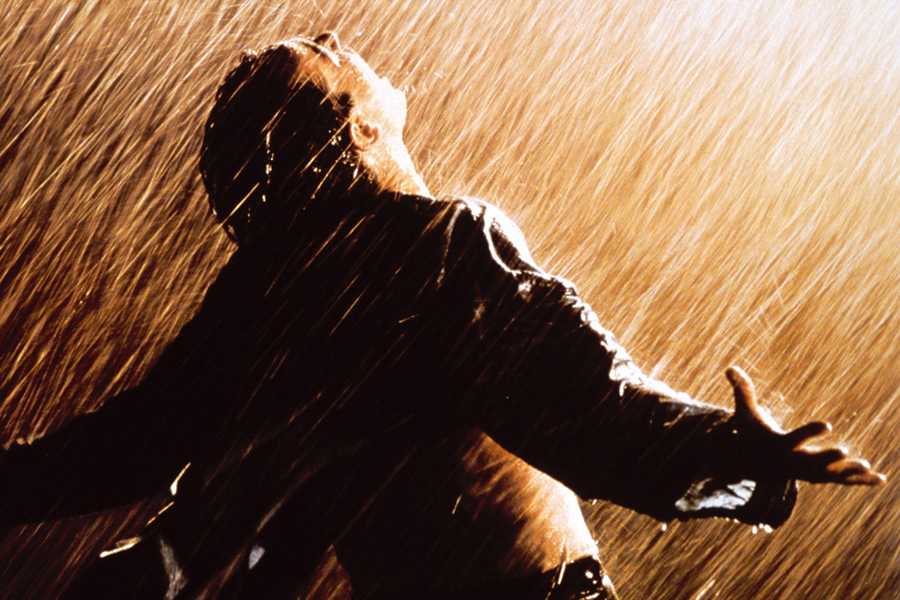Shawshank’s Redemption inspires hope
Oct 7, 2014
Rarely is a film capable of holding such emotional prestige in a moviegoer’s heart and when one does, it deserves to be universally recognized.
Released 20 years ago, “The Shawshank Redemption” is a film that has been bestowed with critical praise for two decades. It has earned the label of one of the best movies ever made and is listed first on IMDB’s user-generated top 250 films of all time.
A film held in such regard by American audiences, the mere mention of the title evokes warmth, empathy and feelings of salvation for everyone familiar with the tale and its memorable characters. For the uninitiated, the film is based on Stephen King’s novella, “Rita Hayworth and the Shawshank Redemption.”
It tells the story of banker Andy Dufresne (Tim Robbins) who was wrongfully convicted for murder of his wife and her lover and is sentenced to Shawshank State Penitentiary in 1947.
The film depicts life in federal prison and his eventual escape from it nearly 20 years later. The film opens with Andy sitting in his car, the night of the murder, drinking hard liquor with a revolver in tow. It cuts to the trial and the case prosecutor hounding Dufresne over the details of the night in question, counter arguing his claims of innocence. We’re introduced to Ellis Boyd “Red” Redding (Morgan Freeman) during the arrival scene, as he narratives the film and is known as a man who can procure certain things from time to time.
Freeman’s narration as Red first gave audiences a taste of how graciously smooth and reassuring Morgan’s voice could be, adding to the film’s majestic quality as he recounts the story like an old friend reminiscing about once forgotten memories.
Also introduced are Warden Samuel Norton and Captain Byron Hadley, chief of the guards.
Hadley (Clancy Brown) is cold, cruel and downright evil in his treatment of Shawshank’s inmates. He brutally injures men when he deems it appropriate and if the order is given, commits murder.
Bob Gunton, who plays Norton, is a man of the cloth who rules the prison with an iron fist. As a preacher, he takes the lord and the operations of his jail incredibly seriously.
Dufresne’s initial years at Shawshank are tumultuous ones. As he keeps to himself, working in the prison’s laundry, he is targeted and frequently sexually assaulted by a gang called “The Sisters,” and their leader Bogs Diamond.
Despite his initial troubles, Dufresne befriends Red and a few others, such as Heywood (William Sadler) and prison librarian Brooks Hatlen (James Whitmore), quickly learning that everybody is ‘innocent’ at Shawshank prison.
An amateur geologist, Dufresne acquires a rock hammer from Red and a poster of actress Rita Hayworth later on to conceal Dufresne’s true intentions in his cell.
Using his banking experience, Andy soon earns favor with the guards by assisting Hadley with helpful tax tips, then after a few years, start to manage all the tax returns for the guards and Warden Norton himself.
His privileged position allows for the removal of Bogs, as one night he and his gang brutally beat Andy close to an inch of his life. In retaliation, Hadley nearly kills Bogs and relocates him to a different prison, providing Dufresne with protection.
Warden Norton also assigns Andy to the prison library and thereafter, Dufresne turns it into one of the best kept prison libraries in Maine.
After several stints in solitary confinement, Dufrense expresses to Red his thoughts on incarceration and how he dreams to be living in Zihautanjeo, a coastal town in Mexico.
The following morning Dufrense is not found in his cell. Warden Norton and viewers soon discover the hole Andy dug to escape behind a poster of Raquel Welch.
Digging his way through prison walls and crawling through sewer pipes, Dufrense comes out on the other side a free man.
It is revealed that Andy switched out the Warden’s documents with decoys the night before the escape and assumes the fake identity of Randall Stephens. He also steals the dirty money the Warden was hiding in bank accounts filed under Dufrense’s fake name.
He also sends police and reporters detailed accounts of the corruption and murder taking place at Shawshank and causes the Warden to rethink the value of his life, while Hadley is arrested for his brutal crimes.
Dufresne relies on one key theme of the film, hope.
Hope for freedom, hope for retribution, and hope for redemption.
A concept Red at first dismisses but soon latches onto when he is successfully paroled and seeks to reunite with Andy.
Feelings of optimism and hopefulness have been attached to the film, despite the hurdles of despair. Shot in muted blue and grey colors just like the prison attire, it gives us a bleak outlook of the world within the prison system and the men it incarcerates but never fully embraces the dark atmosphere that clouds it.
Composer Thomas Newman created one of the most endearing and inspiring musical scores ever recorded on film. Not for a moment does it let go of our heartstrings as each song carries a different emotion, from happiness to sadness or anger to forgiveness.
The good-natured and uplifting message that one can overcome the insurmountable odds even when wrongly convicted has only reinforced the accolades and positive reception it has garnered since its release.



